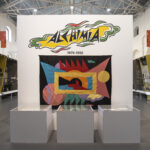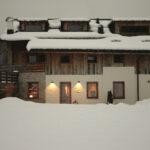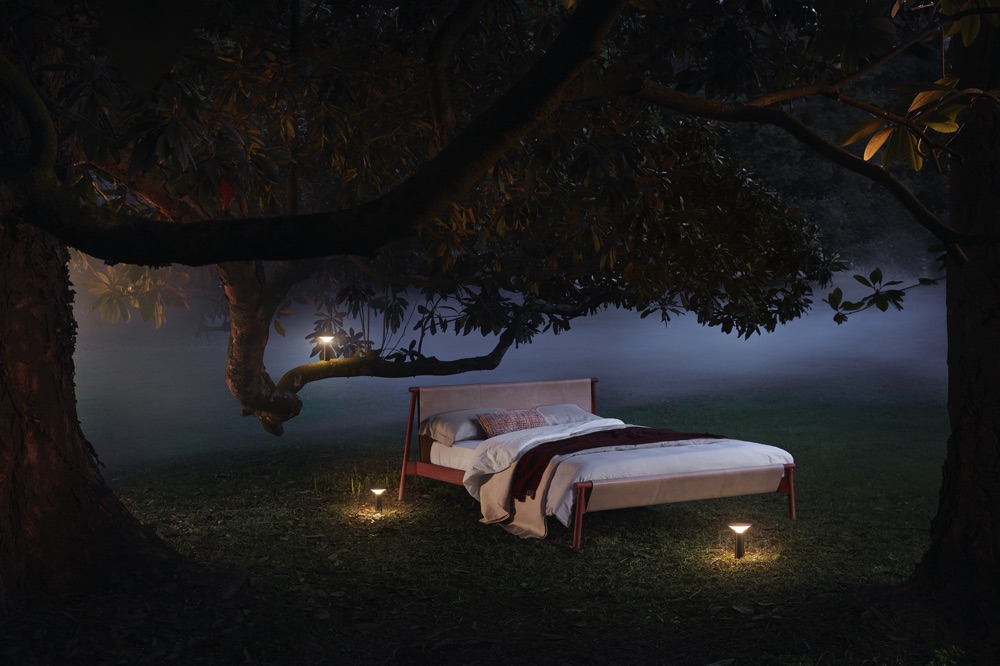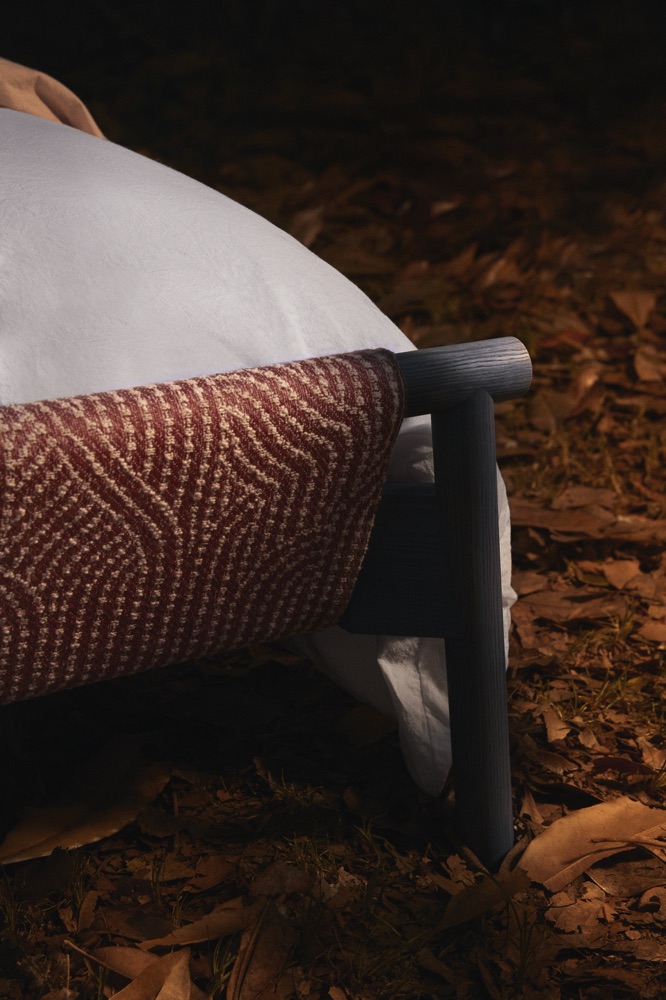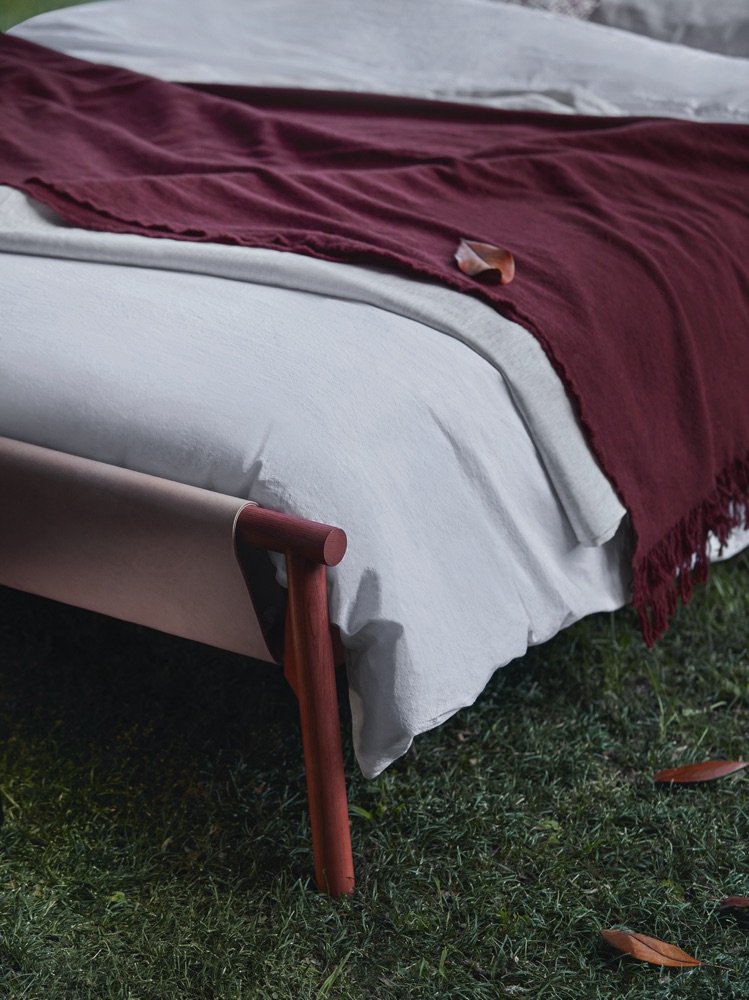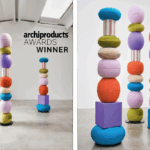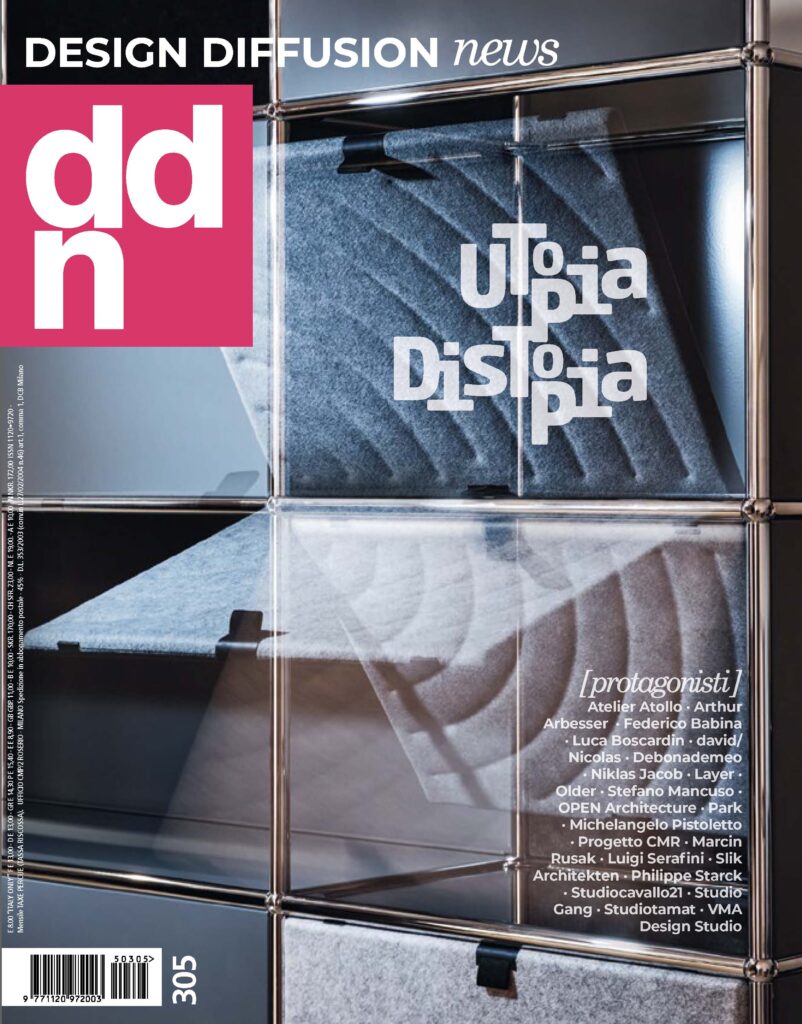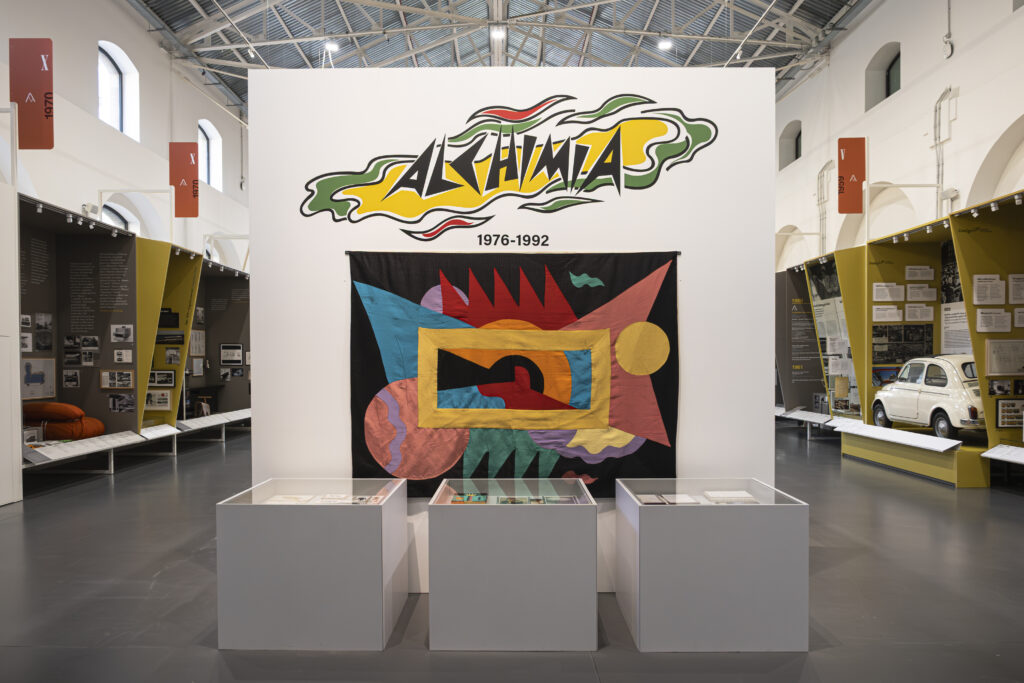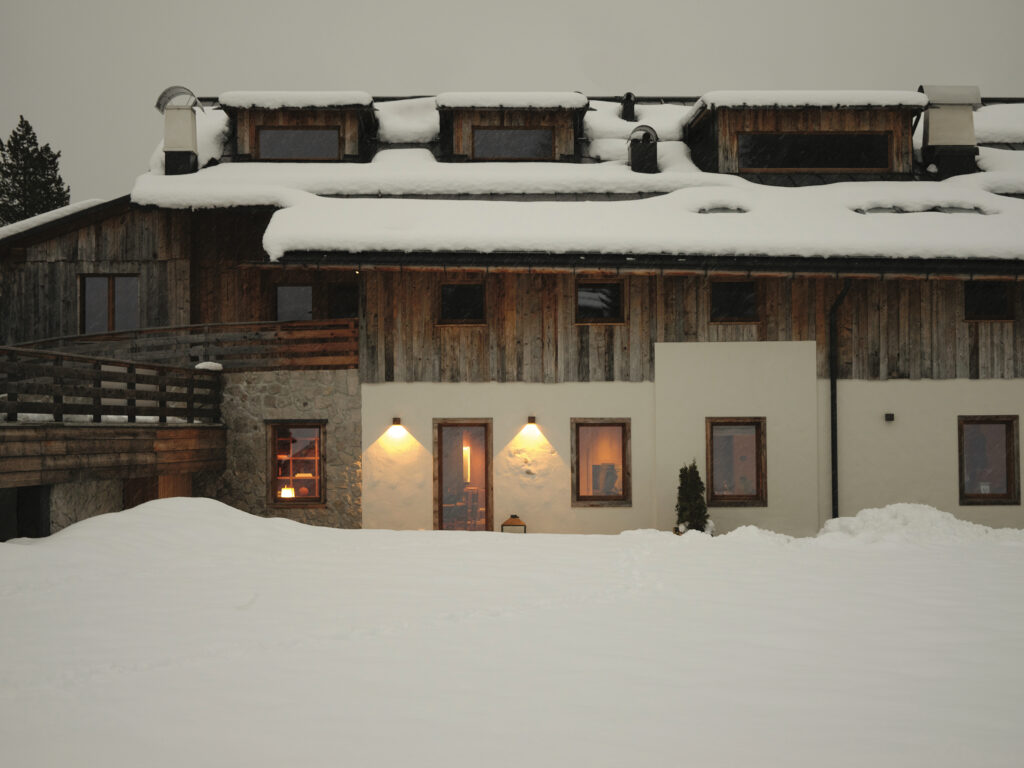Zanellato/Bortotto’s Jack bed for Bolzan in fabric, leather, wood and metal, customizable and tailored
Bolzan presents a new version of the Jack bed, first designed by Zanellato/Bortotto in 2017. In the new version, the fabric remains central but is combined with a wooden frame; also new in this version is leather upholstery.
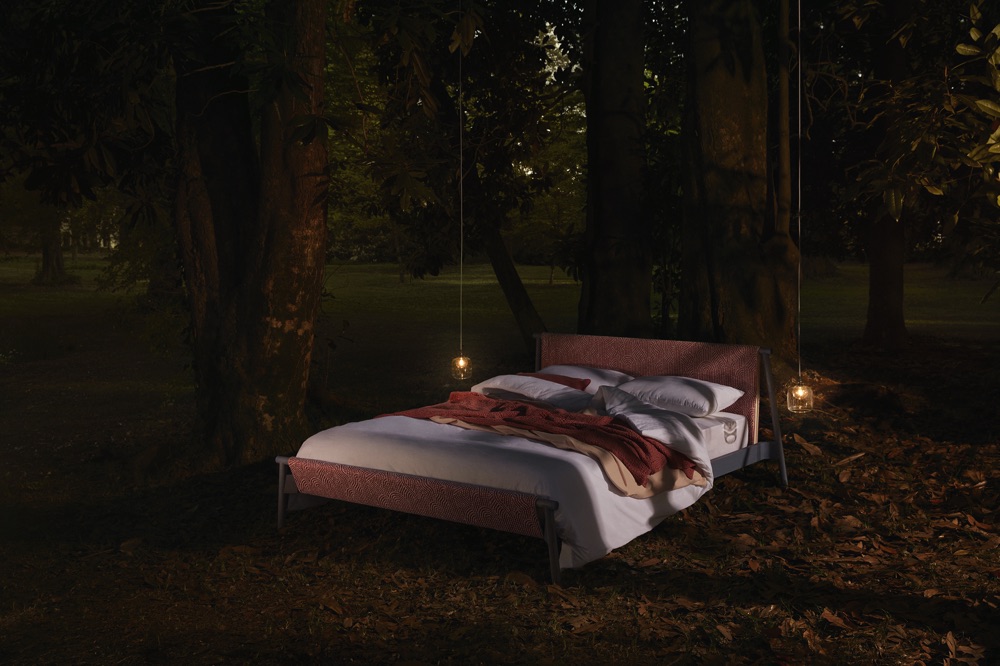
The tubes can be cut to any size upon request, for custom sizes, from French bed to king size or special sizes. Headboard and footboard are like two rollers to which the fabric (or leather) is attached, through a simple zipper. The bed is shipped totally disassembled, to reduce the environmental impact of shipping. A bench and small table complete the collection.
The fabric for the Jack bed by Bolzan, from scrap material
The fabric, from Torri Lana 1885’s Sacile collection for Bolzan, is made specifically for Bolzan, based on a design by Zanellato/Bortotto. Then, the upholstery is in cotton that is usually discarded because it is unsuitable for production, a short yarn. The weft is in hemp, a plant that grows with little water and is credited with reclaiming soils from heavy metals. On the other hand, the warp is in American cotton with a slubbed effect, also produced by Torri Lana, woven on a double-weave jacquard loom, making it very durable. The resulting three-dimensional texture makes Zanellato/Bortotto’s pattern stand out.
Discover Tessuto, the decorative radiator for Cordivari Design
The organic paint for wood
LorisTill, by Loris Giacomin, created a reforested and certified ash wood that Bolzan used for the Jack bed. Loris Giacomin creates totally natural paints using earth and ground stones, dissolved in boiling water. The dye created in this way is applied with a rag, using a technique called ‘ragging’, which allows the color to be reapplied several times, especially on curves and folds of furniture.
Natural leather
For leather, Bolzan’s choice also falls on Presot natural leather, without chemical treatments. Besides being without chemical treatments, Presot’s leather comes from cows that grow wild, so it is rich in marks and imperfections that come from spending a lifetime in the open air. Finally, all waste from the tannery’s processing is reused for other virtuous cycles, where waste comes back to life.



